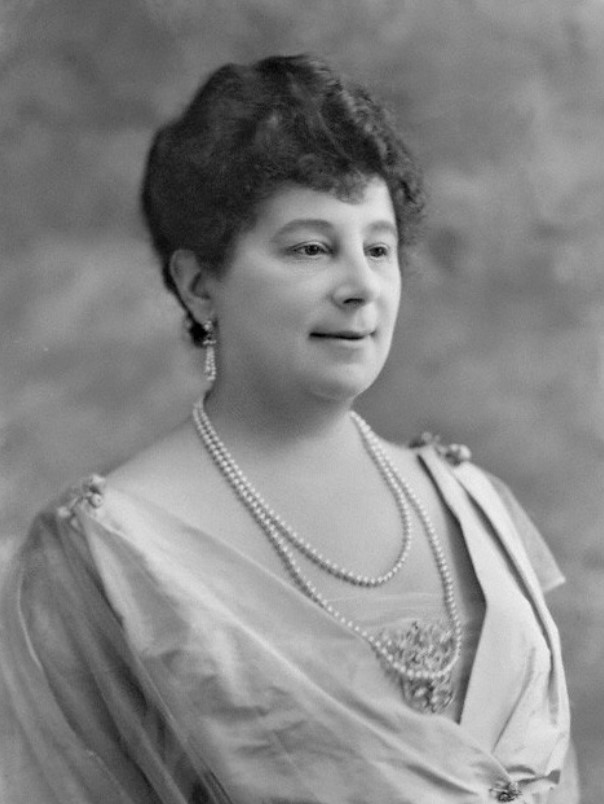The Hungarian Riviera
Baroness Orczy
When the novelist Baroness Orczy bought her Villa Bijou at 19 Avenue de la Costa in Monaco in 1915, she was able to look down from her garden to the valley below onto waves of grey-green olive trees interspersed with the odd palm. But as the 1900s progressed so did the Principality, although the Baroness did not see it as progress. She felt the valley had been filled with, ‘immense blocks of stone … Germanic in character and wholly devoid of artistic features’. And ‘the place might have been made so beautiful. Nature had done her best for old Monaco, had expended her priceless treasures of beautiful colour … and man did his best to spoil those priceless gifts which she had so lavishly showered on this corner of the earth’.

Emmaska Orzcy de Orci, known as Emma to her family, was born in 1865 in Tarna-Ors, near the River Tarna on the Hungarian plain, to a noble family. Her father was a composer and her family had held positions both at the royal court and the country’s parliament. But in 1868, fearing a peasants’ revolt, Emma and her family fled to Budapest. From there, via Brussels and Paris, they eventually settled in London at 162 Great Portland Street. Emma attended first, the West London School of Art in Westminster, and then the Hetherley School of Art in Regent Street. Here she became proficient enough in oils and watercolours to have several of her paintings hung in the summer exhibitions of the Royal Academy and here she met her husband. Montagu Barstow was the son of a clergyman and a successful illustrator. The fact that he had no aristocratic connections was not important to Emma for … ‘My marriage was for close on half a century, one of perfect happiness and understanding, of perfect friendship and communion of thought’. The wedding was held in St Marylebone Parish Church in 1894 and their first home was a rented studio in Holland Park Road.
Left – Emmaska Orzcy de Orci
They loved their London life at the end of the 1800s and relished the theatres, art galleries and historic buildings of the city. Emma remembered, with affection, the old horse-drawn buses which trotted along Oxford Street on their way to Victoria. Their floors were covered with straw and the first of these had iron ladders to enable the brave to ascend to the top deck. She gazed with pleasure at the Broughams and Landaus driving ‘everybody who was anybody’ through the Park at the fashionable hour.
The couple were neither rich nor poor but when one day Emma realised that others were writing articles and books and getting paid for it, she made the decision to do the same. She found it was historical fiction that came easily to her, so easily that over the following decades she poured out numerous novels, plays and film scripts. But it was the twenty novels and offshoots of the dashing English aristocrat The Scarlet Pimpernel which enabled her to buy her Villa Bijou.
The character of The Scarlet Pimpernel was prompted by a visit the couple made to Paris to see the Universal Exhibition of 1900. In Paris they found themselves, and the English in general, unpopular. The Boer War had almost run its course in South Africa and the French were firmly pro-Boer. They depicted the English as ruthless and cruel land-grabbing colonialists. Caricatures, cartoons and mockery were widespread. Feeling victimised, Emma thought of other victims. Living in the Latin Quarter she felt the ghosts of the Revolution around her. As the form her hero would take grew, she knew there would be vindication involved. He would be a dashing, high-born Englishman who would snatch the French aristocrats from the revolutionaries, Madame Guillotine, and the jaws of death, leaving behind him a small red flower to mark his passage – a pimpernel.

The Pimpernel books are not for the faint-hearted. The pages, particularly in the first book, are awash with terror and gore. She chose to call her Pimpernel Sir Percy Blakeney, who became a superhero when he felt the urge to swashbuckle into Paris and rescue those about to have their heads removed. The story of The Scarlet Pimpernel was introduced to the public in a London theatre in 1905 and, from then on, in plays, films and novels never ceased to be popular.
Emma, Montague and their son Jack, spent the years of the 1914-18 war in England, but returned to Monaco in 1919. Although she had lost the inheritance from her family when the Hungarian economy collapsed in 1918, her books and other work made her comfortably off. From then on they would divide the year between Monaco and England but Monaco was considered home.
Emma Orzcy appears very rarely in the books of celebrity biographers, such as Cecil Beaton, Elsa Maxwell or Noel Coward. The couple did not gamble nor did they seek the high life of Cannes or Nice. Their community was Monaco, and here Emma wrote and Montagu painted and they socialised with chosen friends.
With the increase of English expatriates in the Principality there came a demand for an English church as there had not been one since the war – ‘We must have a place where we can sing ‘God Save the King’. Emma and her husband threw themselves into fund raising. They were on good terms with Prince Pierre of Monaco and enlisted the help of Queen Victoria’s son, the Duke of Connaught. The Principality donated a site for the church, but this turned out to be a piece of almost sheer rock face, which was challenging in the extreme. But the local architects and builders used their particular expertise to create the church itself, three apartments, a large recreation room and the usual offices. In 1922 the Duke of Connaught laid the foundation stone in the presence of the Bishop of Gibraltar.
It was the recreation room that gave Emma so much pleasure for, in spite of her belief in the importance of La Noblesse, she was not a snob, and the fact that the room could become a relaxing club for the English maids, chauffeurs and other staff, filled her with satisfaction. The club was equipped with table tennis, a darts board, card tables and a gramophone. There was a dance every week. Most joyous of all was the welcoming of the English ships’ crews that docked at Monaco or neighbouring ports. These ranged from grimy coal boats to great British war ships and there was much animation and reciprocal entertainment. Emma felt those years were ones of ‘unalloyed happiness’. Impossible then, to know what the future would bring.
When war was declared between England and Germany, Emma and her husband dithered. They were on their way from England to winter in Monaco and had stopped at Aix-les-Bains. Suddenly there was a first wave of panic, with many of the English immediately heading back home. But instead of joining the exodus, the couple turned eastwards en route to Monaco. It was not a good choice, for Montague became seriously ill and was sent to neutral Switzerland for an operation after which there was no question of escaping to England. As the Italians occupied Menton and then Monaco under the Armistice and the new ‘government’ of Vichy France, the Principality became under increasing pressure. Money and food became scarce. All newspapers, apart for those approved by Vichy, were banned. The Principality was effectively cut off from international events.
Right – Emmaska Orzcy de Orci

There were many restrictions and, once again, the English became unpopular as a result of the evacuation of Dunkirk and the attack on the French ships at Mers-el-Kebir.
As the English consuls along the Riviera had deserted their consulates and fled (the Cannes consul was particularly criticised) so did the chaplains of the English churches. Only one, the elderly chaplain of Beaulieu, stayed to take services when he was able. But the small congregation were not permitted to sing ‘God Save the King’.
When in November 1942 the German army invaded the whole of France and the remaining English and American citizens were sent away from the coast to the hinterland, Emma and her husband were not among them. But in early 1943 Montagu Burstow died and, ‘I was left in darkness and alone’. The following years of the war passed in a mist of loneliness until the Allied bombardments began in 1944. They were devastating for Monaco, the Post Office and the Etablissement Thermal were destroyed and the vast majority of shops lost their display windows. Fragments of the bombs hit Emma’s Villa Bijou, devastated her garden and made holes in the roof.
The following year Emma returned to England where, in 1947, she wrote her last novel Will-O’-The Wisp and published her autobiography. She died in November of that year and is buried at Henley-on-Thames in Oxfordshire, far from her beloved Montague. War does that kind of thing.
© Copyright: Maureen Emerson 2021
Sources:
- Links in the Chain of Life. Baroness Orczy – Hutchinson & Co. Ltd, 1947.
- St Paul’s Anglican Church, Monte Carlo – there is a bust of Baroness Orczy in their library.
